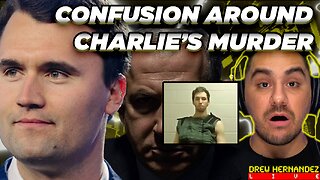Premium Only Content

PLATO Approximate String Matching
In 1986, a survey of approximate string matching algorithms found the algorithm used in the PLATO computer-aided instruction system was third place in quality (F1 score) and was an order of magnitude faster than the best performing algorithms. The PLATO algorithm used an unusual dimensional projection approach, while the competing algorithms of the day used edit distances or phonetics. However, this approach failed to catch on and the design is rarely mentioned in the literature. This video describes how the algorithm worked and some reasons why it became forgotten.
Damerau, Fred J. "A technique for computer detection and correction of spelling errors." Communications of the ACM, vol. 7, issue 3, March 1964, 171-176. https://doi.org/10.1145/363958.363994
Navarro, Gonzalo. "A Guided Tour to Approximate String Matching." ACM Computing Surveys, vol. 33, issue 1, March 2001, 31-88. https://doi.org/10.1145/375360.375365
Nesbit, John C. “Approximate string matching in response analysis.” Journal of Computer-Based Instruction 12.3 (1985): 71-75. https://archive.org/details/sim_journal-of-computer-based-instruction_summer-1985_12_3/page/n15/mode/1up
Nesbit, John C. “The accuracy of approximate string matching algorithms.” Journal of Computer Based Instruction 13.3 (1986): 80-83. https://archive.org/details/sim_journal-of-computer-based-instruction_summer-1986_13_3/page/n18/mode/1up
Tenczar, Paul and Golden, William. "Spelling, Word, and Concept Recognition." Computer-based Education Research Laboratory, University of Illinois, 1972. https://www.computerhistory.org/collections/catalog/102723111
Ray Ozzie clip courtesy of the Computer History Museum. https://www.computerhistory.org/collections/catalog/102792129
-

TimcastIRL
2 hours agoDOJ Releases Charlie Kirk Assassin Messages, Trans Left Aligned Confirmed | Timcast IRL
286K102 -
 LIVE
LIVE
Man in America
5 hours agoSICK: Xi & Putin Caught Plotting Organ Transplants for “Eternal Life”
823 watching -
 LIVE
LIVE
Drew Hernandez
7 hours agoMASS CONFUSION AROUND CHARLIE'S MURDER
1,366 watching -
 1:01:40
1:01:40
HotZone
6 days ago $2.26 earned"Prepare for WAR" - Confronting the URGENT Threat to America
18K8 -
 20:23
20:23
Scammer Payback
8 hours agoTerrifying Scammers with File Deletions
8.4K1 -
 16:22
16:22
The Gun Collective
4 hours agoWOW! 17 New Guns JUST GOT RELEASED!
6.68K8 -
 1:13:57
1:13:57
Glenn Greenwald
5 hours agoYoung Men and Online Radicalization: Dissecting Internet Subcultures with Lee Fang, Katherine Dee, and Evan Barker | SYSTEM UPDATE #516
150K56 -
 1:14:57
1:14:57
Sarah Westall
2 hours agoCEO of Crowds on Demand: The Fake World of Social Media, Protests & Movements w/ Adam Swart
27.4K2 -

Geeks + Gamers
5 hours agoTuesday Night's Main Event
54.8K2 -
 40:36
40:36
RiftTV
4 hours agoHow We Got 400 Leftists FIRED for MOCKING Charlie Kirk | The Rift | Guest: Olivia Krolczyk
58.5K29